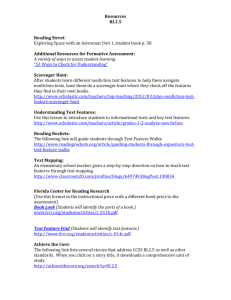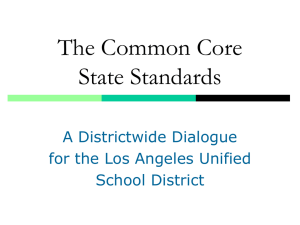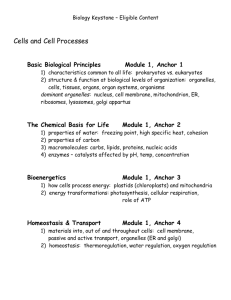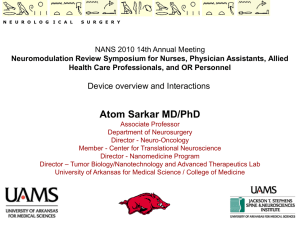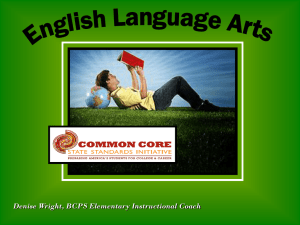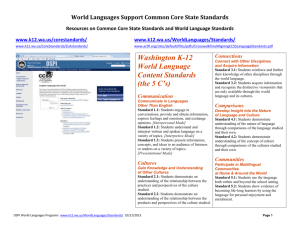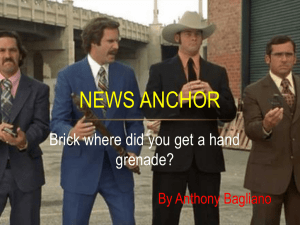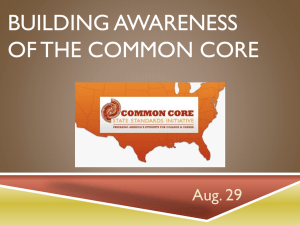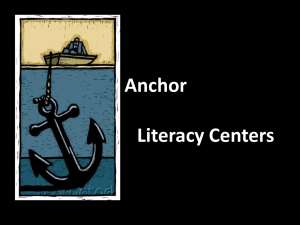Visual Thinking Strategies and the Common Core State Standards
advertisement
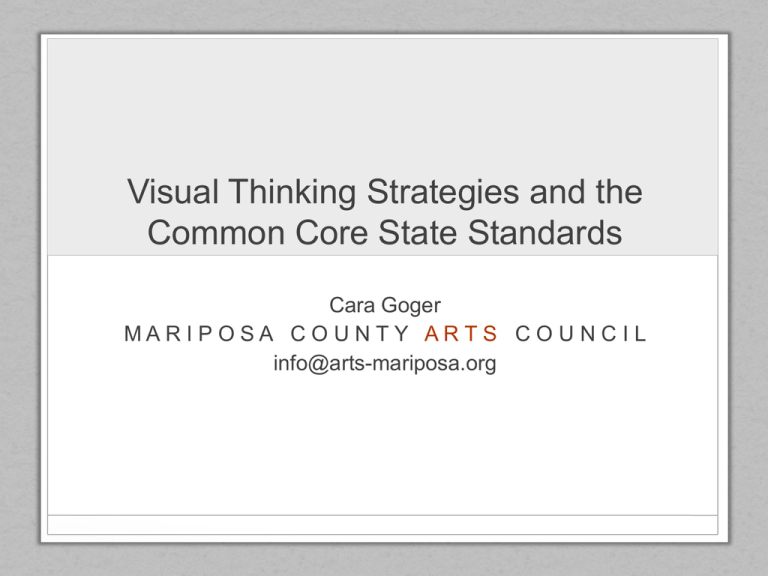
Visual Thinking Strategies and the Common Core State Standards Cara Goger MARIPOSA COUNTY ARTS COUNCIL info@arts-mariposa.org What is going on in this photograph? Larry Fink Visual Thinking Strategies Visual Thinking Strategies (VTS) is a student-centered curriculum in which the student examines and discusses works of art, prompted by questions selected to support careful, evidentiary looking. VTS questions are: 1. What is going on in this picture? 2. What do you see that makes you say that? 3. What more can we find? Imogen Cunningham Visual Thinking Strategies 3 Facilitation Techniques: • Paraphrase comments neutrally • Point at the area being discussed • Linking and framing student comments Jerry Uelsmann Visual Thinking Strategies Students are asked to: Danny Lyons • Look carefully at works of art • Talk about what they observe • Back up their ideas with evidence • Listen to and consider the views of others • Discuss many possible interpretations Visual Thinking Strategies and the Common Core State Standards One of the major shifts in the Common Core State Standards for English Language Arts demands that students "produce and use evidence in a text to justify their views" (Santos, DarlingHammond & Cheuk, 2012). By using the VTS method on a regular basis, teachers can develop evidencebased reasoning habits in their students. Alexander Rodchenko Visual Thinking Strategies and CCSS ELA Anchor Standards Reading Anchor Standard 7: Integrate and evaluate content presented in diverse media and formats, including visually and quantitatively, as well as in words. Anchor Standard 6: Assess how point of view or purpose shapes the content and style of a text. Sebastiao Selgado Visual Thinking Strategies and CCSS ELA Anchor Standards Elliott Erwitt Writing Anchor Standard 1: Write arguments to support claims in an analysis of substantive topics or text, using valid reasoning and relevant and sufficient evidence. Visual Thinking Strategies and CCSS ELA Anchor Standards Speaking and Listening Anchor Standard 1: Prepare for and participate effectively in a range of conversations and collaborations with diverse partners, building on other’s ideas and expressing their own clearly and persuasively. Anchor Standard 2: Integrate and evaluate information presented in diverse media and formats, including visually, quantitatively, and orally. Anchor Standard 3: Evaluate a speaker’s point of view, reasoning, and use of evidence and rhetoric. Anchor Standard 4: Present information, findings, and supporting evidence such that listeners can follow the line of reasoning and the organization, development, and style are appropriate to task, purpose, and audience. Phillipe Halsman Visual Thinking Strategies and CCSS ELA Anchor Standards Language Standards Anchor Standard 5: Demonstrate understanding of word relationships and nuances in word meanings. Alex Webb Visual Thinking Strategies and English Language Learners The CCSS guidelines for working with English Language Learners explicitly states that teachers should: Harold Eugene Edgerton • Provide opportunities for ELLs to interact with proficient English speakers • Provide opportunities for classroom interactions (both listening and speaking) that develop concepts and academic language in the disciplines. • Provide opportunities for ELLs to build on their strengths, prior experiences, and background knowledge. SOURCES Coleman and Goldenburg. (2012) The Common Core Challenge for English Language Learners. Principle Leadership (pp. 46-51). DeSantis and Housen. (2007) Aesthetic Development and Creative and Critical Thinking Skills Study. Visual Understanding in English. Housen. (2001-2001) Aesthetic Thought, Critical Thinking and Transfer. Arts and Learning Research Journal, Vol. 18, No.1 (pp. 99-132) Housen. (1999) Eye of the Beholder: Research, Theory and Practice. Presented at the conference of “Aesthetic and Art Education: a Transdisciplinary Approach. Lisbon, Portugal Santos, Darling-Hammond, Cheuk. (2012) Teacher Development to Support English Language Learners in the Context of Common Core State Standards. Understanding Language | Language, Literacy, and Learning in the Content Areas. Thinking Through Art Isabella Stewart Gardner Museum School Partnership Program Summary Final Research Results (2007). Institute for Learning Innovation, Annapolis, MD RESOURCES Visual Understanding in Education (VTS) webpage: www.vue.org Understanding Language | Language, Literacy, and Learning in the Content Area – Stanford University http://ell.stanford.edu
